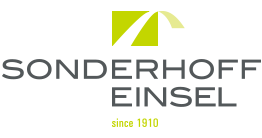The Japanese design system
General information
Protection for designs of commercial products may be made through an application to the Japan Patent Office. Protection covers the shape, patterns or colors or the combination thereof. The scope of protection includes designs (products) that are similar to the registered design. Design applications are examined by the examiners of the Japan Patent Office (JPO) and the design will be registered only if it has absolute novelty and sufficient level of creativeness.
Design rights remain valid for 25 years from the application date on condition that the annuities are paid.
FAQ
Q1. What designs are applicable for design protection in Japan?
A1. A figure of a product is registrable. The product for which the design is applied for must be mass-produced. Just like the European Community design system, since April 1, 2020, a design of a building, or an arrangement of interiors is registrable under the Japanese Design Act.
Unlike the European Community design system, since a “logo” or a “character” are not directly connected with a product, these are not registrable. Therefore, we recommend protecting such logos or characters by a trademark registration.
On the other hand, a component part that is not visible during normal use is registrable. For example, a design for a semiconductor element can be registered under the Japan Design Act.
A Graphic User Interface (GUI) including icons is also registrable.
Example 1 (building)

(Design Reg. No. 1686737; Indication of Product: House)
Example 2 (arrangement of interior)

(Design Reg. No. 1712111; Indication of Products: interior of retail store)
Example 3 (component part)

(Design Reg. No. 1711417; Indication of Products: semiconductor element)
Example 4 (Graphical User Interface)

(Design Reg. No. 1712380; Indication of Products: Image for operating electronic devices)
Q2. How can a design right be obtained in Japan?
A2. It is necessary to file a design application before the JPO. After a formality check, all applications undergo a substantive examination. For a registration to be allowed, the design must have novelty, uniqueness, and not be easy to create. It usually takes about six months to receive a first office action from the JPO.
Q3. What is necessary for filing a design application?
A3. The minimum requirements for filing a design application are as follows:
- Name and address of the designer
- Name and address of the applicant
- Illustrations
- Indication of products, or the usage of the building or graphic image embodying the design
Please note that no Power of Attorney is necessary for the examination procedure. Also, no assignment document from a designer to the applicant is required.
Q4. What kind of illustrations are acceptable in Japan?
A4. Line drawings, computer-generated pictures, or photographs will be accepted. It is recommendable to file views of all six sides of the design as a Multiview orthographic projection or at least two illustrations as an isometric projection, which sufficiently show all sides of the design. Unlike the European Community design, even though the design’s feature may appear only on the front, the above-mentioned views still need to be filed in order to enable the JPO’s examiner to recognize the design correctly.
Please refer to the following for more details:“Illustriation Guideline”
Q5. How many designs can be included in one application?
A5. Since April 1, 2020, it is possible to file multiple designs in one application. There is no limitation regarding the number of designs or Locarno classification, unlike the European Community design system. However, the examination and registration will be conducted for each design individually.
Q6. Can a priority right under the Paris Convention be claimed?
A6. Yes, the Japanese subsequent application has to be filed not later than six months after the filing date of the priority application. Late filing of the priority document is accepted, but not later than three months after the JP filing date.
Since January 1, 2020, the WIPO DAS (Digital Access Code) is available in Japan.
In order to claim a priority right, the illustrations as filed in Japan must completely consist with those of the priority application.
Q7. Is there any grace period for lack of novelty?
A7. Yes, the grace period is one year from the date of first disclosure.
As we mentioned above, only a design with novelty is allowed for registration in Japan. Thus, if the design is publicly disclosed before filing, it will be rejected. If the application is filed during the grace period, the design is regarded as having maintained novelty even though it was already disclosed.
However, in order to enjoy the grace period, there are several requirements:
Please refer to the following for more details: “The grace period”
Q8. Is it possible to defer publication in the Design Bulletin?
A8. Yes, the publication in the design bulletin can be deferred for up to three years from the date of registration. It is called the “secret design system”.
Please refer to the following for more details: “Secret designs”
Q9. Are there any other unique systems to protect a design in Japan?
A9. Yes, there is a “partial design system” and a “related design system”.
A “partial design” is a form of design registration that focuses only on a unique part of a certain design, i.e. a design with a disclaimer.
Please refer to the following for more details: “Partial Design”
The “related design system” allows a respective registration of similar designs. Clarifying the scope of a design right is in general difficult. The Japanese “related design system” helps to address this problem and makes such clarification easier and clearer.
Please refer to the following for more details: “The related design system”

Source: Website of the Japan Patent Office

